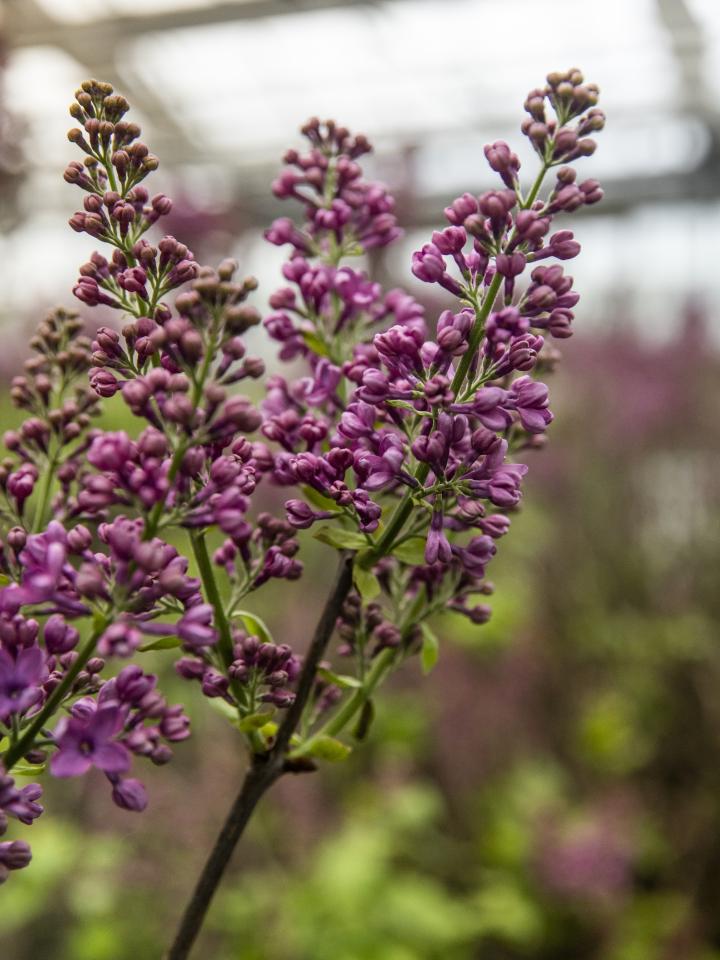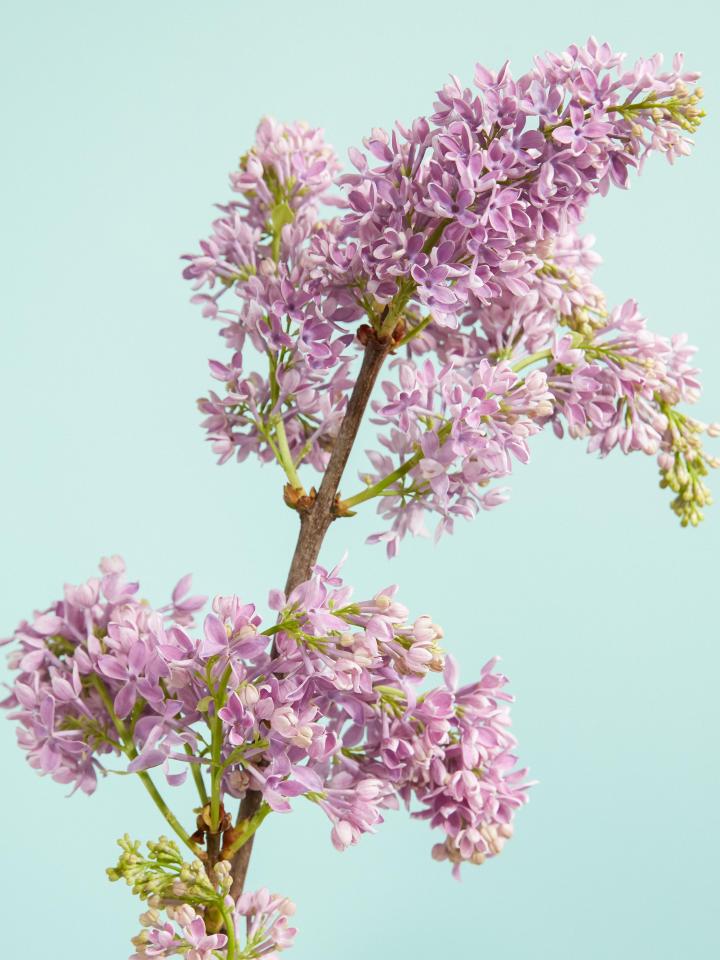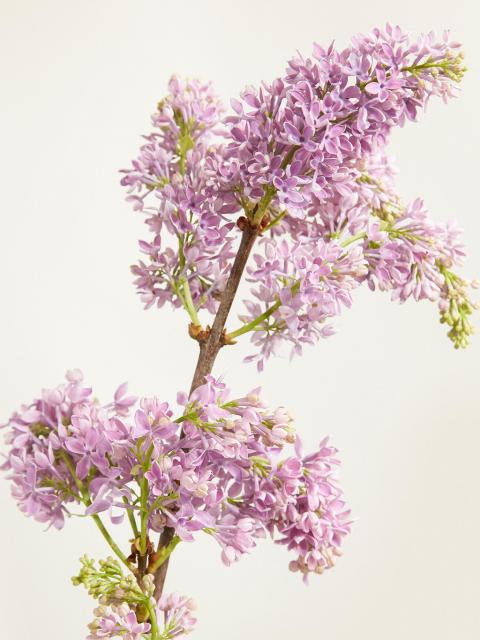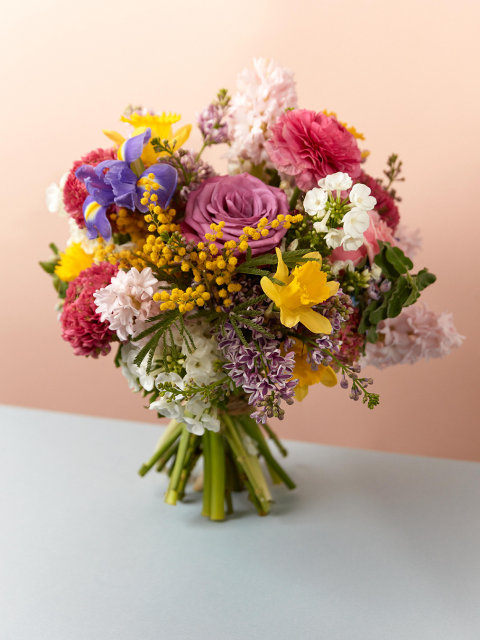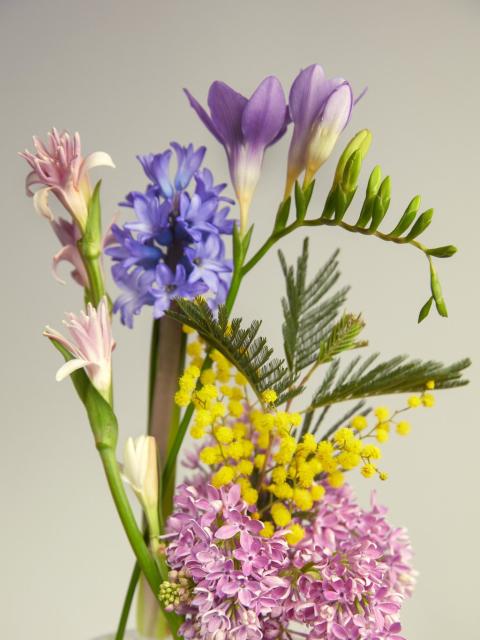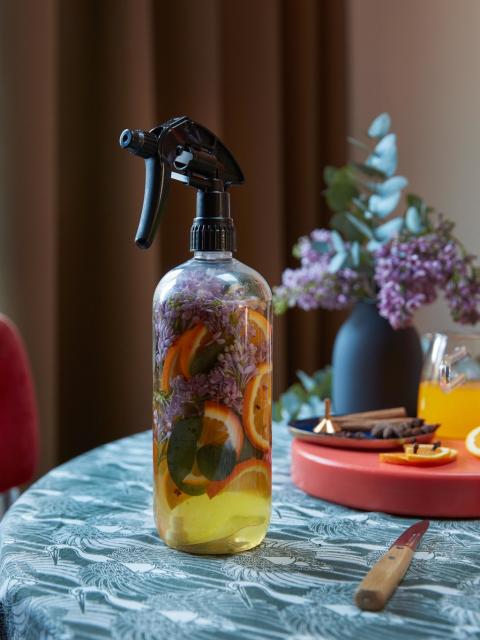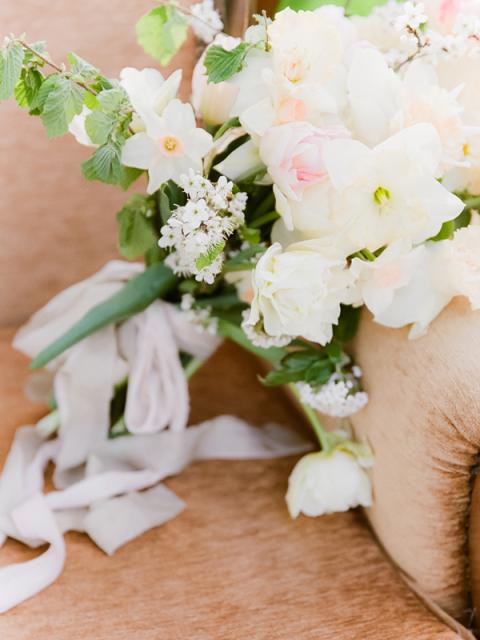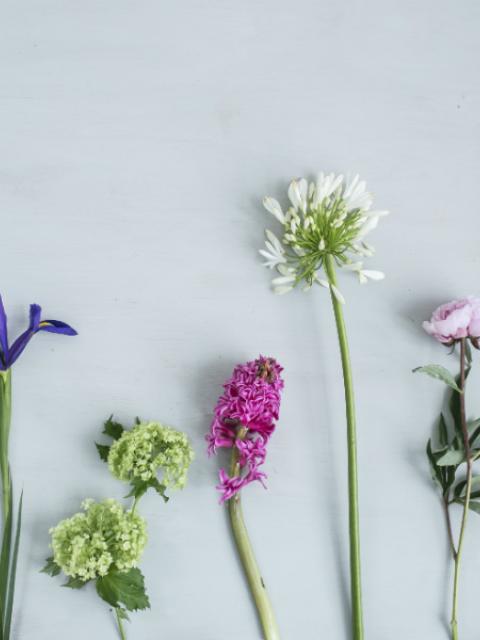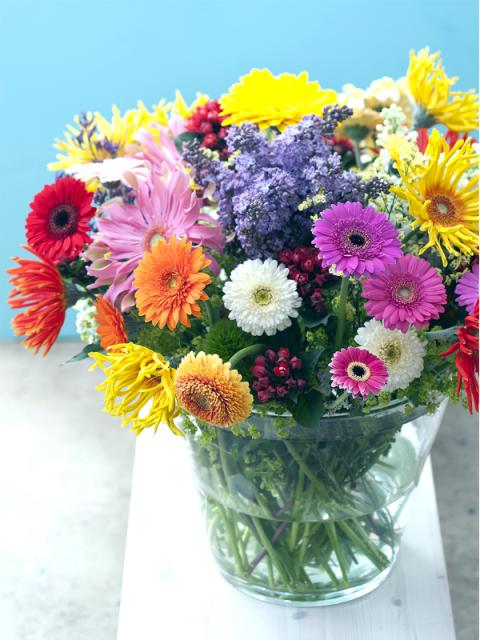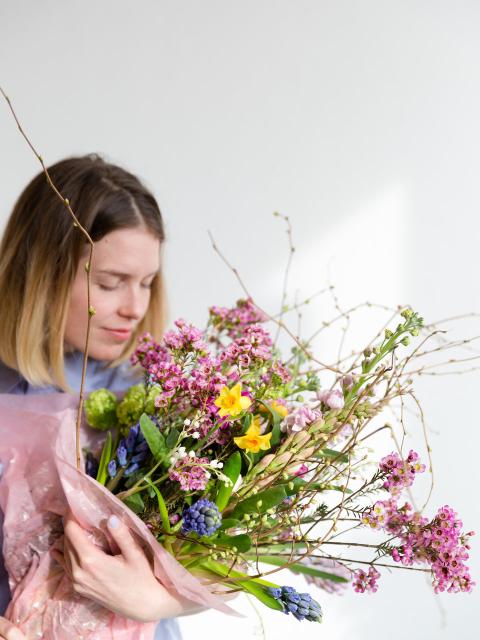LILAC: CHARACTERISTICS AND FLOWERS
Lilac is an enchanting eye-catcher. This plant is a strong, robust shrub or tree which can be recognised during flowering by its striking, branched flower clusters in plumes. These flowers are often purple or white, but can be pink or violet. The flowers are characterised not only by the clusters, but also by their delicious, sweet fragrance. Lilac's leaves are smooth, fresh green in colour and fall off in the autumn. It doesn't not stay green in winter, but it is a hardy plant. Lilac usually blooms from April to June and has its floral peak in May. The small-flowering lilac, also called mini lilac, flowers twice: in May and June and in August and September.
Lilac belongs to the olive family (Oleaceae), which also includes plants such as forsythia, jasmine and osmanthus. Lilac, if not pruned, can grow up to 7 metres tall. On average, a lilac is 1 to 3 metres tall. It's popular both as a cut flower and as a garden plant, and is bred specifically for both purposes.
WHAT KINDS OF LILACS ARE THERE?
There are about 25 species of lilacs, but there are hundreds of different cultivars. The common lilac (Syringa vulgaris), is native to south-eastern Europe. There are also beautiful species that come from China and Korea. These are some well-known species and cultivars:
- Common lilac: this species, also called Syringa vulgaris, is the most common with the largest flower clusters and the strongest scent. The flowers of this species are purple, white or pink. The best-known ‘common’ lilacs are:
- Syringa vulgaris ‘Andenken an Ludwig Späth’: this lilac can be recognised by its purple/purple-red, relatively narrow and large flowers that can grow about 30 centimetres long. This species has a relatively strong scent.
- Syringa vulgaris ‘Michel Buchner’: this lilac is also known as the ‘common lilac-coloured lilac’. It's characterised by its lilac-coloured flowers and heavily branched inflorescence with dense flower clusters.
- Syringa vulgaris ‘Madame Lemoine’: this lilac is known for its beautiful, pure white, fragrant flower panicles.
- Dwarf lilac: dwarf lilac, also called mini lilac, has smaller flower clusters (about 10 centimetres long) and more compact growth than the common lilac. They are delicate shrubs, making this species a good choice for smaller gardens or balconies. The flowers of this species can be purple, white or pink in colour. Dwarf lilacs often flower twice, in spring (May/June) and in late summer (August/September). Some well-known dwarf lilacs are:
- Syringa meyeri ‘Palibin’: native to northern China, this species has pale pink, fragrant flowers and short panicles. This species grows about 1-1.50 metres high and is also grown as a standard tree.
- Syringa microphylla ‘Suberba’: this lilac has delicate, pale pink flowers in loose panicles and often has a second flowering period in late summer. The shrub grows about 1.20-1.60 metres tall.
- Syringa patula ‘Miss Kim’: this is a compact shrub that grows about 1.25 metres tall. The tubular, fragrant flowers of this shrub are lilac-purple to pink in colour.

LILAC IN YOU VASE: HOW TO KEEP LILAC LOOKING BEAUTIFUL FOR AS LONG AS POSSIBLE
Lilac as a cut flower in your vase brings a good dose of cheer and a lovely, sweet fragrance to any home. Want to enjoy your lilacs for as long as possible? Check out the tips below for caring for cut lilacs:
- Cut the flower stems diagonally with a sharp, clean knife.
- Remove all leaves from the stems.
- Place lilacs in a clean vase, with lukewarm water. Unlike many other flowers, lilacs thrive in plenty of water. The stems should be two thirds full of water.
- Add cut flower food to the water to extend the life of your flowers.
- Change the vase water regularly.
- Don't put your vase in direct sunlight, in a draught or next to a fruit bowl.
- Are you cutting lilacs yourself to bring inside? Don't cut them too early! Wait until the flowers are blooming beautifully, then cut off some branches during peak flowering to bring lovely fragrance and beautiful colour into your living room.
PLANTING, LOCATION AND CARE TIPS FOR LILAC
Do you have lilacs in your garden or on your balcony? Then you'll want them to thrive and to last as long as possible. Check out the following tips on lilac care and the best locations for growing lilacs:
- Lilac is best planted in the autumn, when the soil is still warm and it has enough time to take root before the flowering period begins.
- Lilac thrives best in a sunny position or in partial shade, and prefers a spot with at least six hours of sunlight a day.
- Lilac doesn't like a lot of wind, so try to place it somewhere sheltered, such as near a wall or hedge.
- Lilac blooms best in well-drained soil with neutral to calcareous soil (pH between 6 and 8).
- For good growth and plenty of flowers, give lilac the right, organic fertiliser. The best time to fertilise is in spring, with phosphate and potassium and limit nitrogen. Too much nitrogen will cause fewer flowers.
- Lilacs can grow quite large, so give the plant plenty of space!
- Give lilacs extra water during dry periods. Potted lilacs need even more water as they dry out more quickly.
- Lilac's ornamental value is much reduced after its flowering period is over. Consider planting it near a later-flowering garden plant that needs a sunny spot (such as echinacea) so that you can enjoy cheerful blooms in that spot for a longer period.
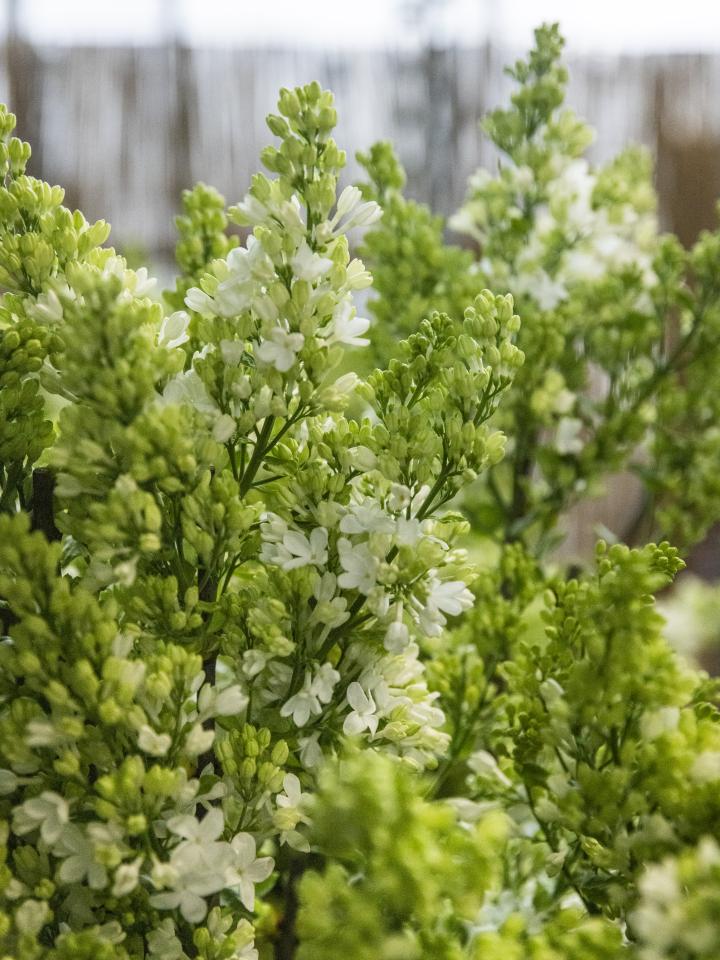
WHY ISN'T MY LILAC PLANT BLOOMING?
Is your lilac not blooming? This could be due to several reasons. It's normal for a lilac plant to skip a year of flowering, or to produce fewer flowers than normal for a year. This could be because of unfavourable weather conditions such as too little sun. Here are some causes for your lilac bearing no or fewer flowers:
- After planting, it may take several years for flowers to appear because this plant needs a lot of energy to take root. Sometimes it is a matter of patience. Give your lilacs time!
- Your lilac had too little sunlight. Perhaps it was a rainy, cloudy and cold spring and the plant didn't get enough warmth. It will flower again next year.
- You transplanted your lilac, so the plant needs time to gain strength.
- There may be too much nitrogen or not enough lime in the soil, which means you may end up with more leaves than flowers. Annual fertilisation with phosphorus can improve growth and flowering.
- You haven't pruned your lilac correctly. Check out our tips for pruning lilacs below.
WHEN AND HOW SHOULD YOU PRUNE LILACS?
Lilac is known for its profuse flowering and grows around 20-40 centimetres a year. Regular pruning is necessary to keep the plant compact and ensure lots of flowers! How you prune a lilac depends on how old the plant is and your desires for the size of the plant.
- Pruning young ‘normal’ lilacs: for young lilacs, it's often enough to cut away spent flower clusters immediately after flowering (around June) and to cut off the buds to keep the plant compact. By cutting away the spent flower clusters, you prevent seed formation, meaning all the energy goes into forming new flower buds for next year.
- Prune old ‘normal’ lilacs: if you have a lilac in your garden that's already years old and metres high, you can prune it more thoroughly during the dormant period (November to March) if desired (e.g. if flowers only appear in the buds).
- Prune the lilac drastically by cutting off or trimming old branches to about 50 centimetres above the ground. After pruning, your lilac will sprout again, but it may take several years before you see flowers again.
- You can prune the lilac less drastically by taking off about a third off the branches every few years.
- Pruning dwarf lilacs (mini lilacs): mini lilacs, also called small-flowering or dwarf lilacs, often flower twice, once in May/June and once in August/September. After the first flowering, you can remove the spent flowers to prepare the plant for the second flowering. Further pruning of dwarf lilac isn't necessary.
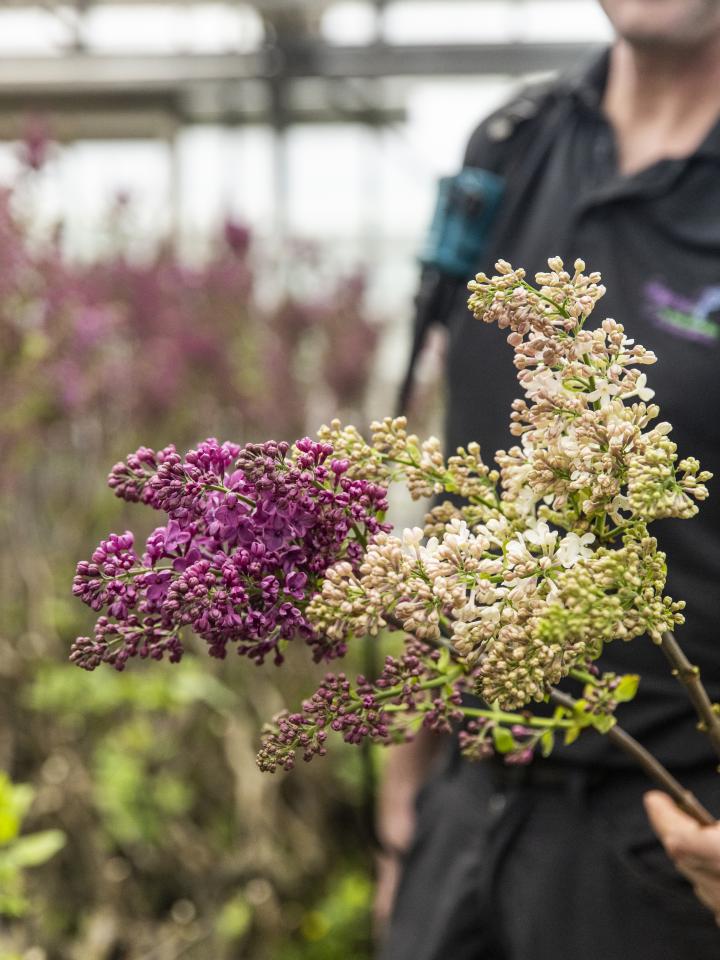
IS LILAC POISONOUS?
No, lilac isn't toxic to humans or animals. If your child or pet has eaten the plant and you're concerned, however, it's always advisable to consult a vet or doctor.
LILAC SYMBOLISM
It seems like every little lilac flower tells its own story, because this plant is rich in symbolism. Lilac symbolises domestic love, memory, nostalgia, tenderness, youth and purity. The flower owes this symbolism to its lovely bunches of flowers that smell so delicious. Lilac also owes its symbolism to the fact that it's a very strong plant that can grow very old and, despite this, still treats you to beautiful, new flower bunches year after year.
LILAC ORIGINS
Lilac is native to south-eastern Europe. It's found in the wild particularly on rocky hills in the Balkans. In the 16th century, lilac became known in central Europe and from the 18th century, lilacs were exported from Europe to America. Over the centuries, this beautiful little fragrance bomb became more and more famous and French nurseryman Victor Lemoine created many beautiful cultivars in the 19th century. Today, the lilac is very popular as both a garden plant and a cut flower.
